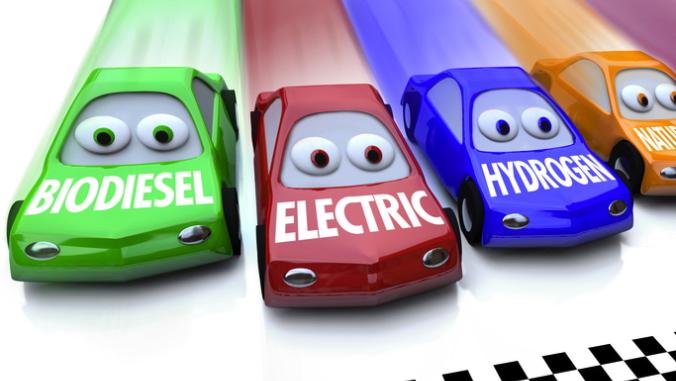Coalition Releases 2012 Cap and Trade Design
The Western Climate Initiative unveiled a draft plan Wednesday for what will become North America's largest carbon cap and trade system set to go into effect in 2012.

The Western Climate Initiative (WCI) unveiled a draft plan Wednesday for what will become North America's largest carbon cap and trade system set to go into effect in 2012.
The coalition of seven states and four Canadian provinces will use the cap and trade system in its bid to reduce greenhouse gas emissions 15 percent below 2005 levels by 2020. During the first three years of the system, electricity generators, oil and gas processors, and large industrial and commercial emitters will participate, with the transportation sector joining in 2015.
"I think it's a huge step forward that these seven states and four provinces have all agreed to set a cap on their emissions," said Erin Rogers, spokeswoman for the Union of Concerned Scientists. "That is tremendously important, especially in the face of federal inaction."
The cap and trade works like this: WCI establishes a cap, or limit of greenhouse gases that can emitted. Industries covered by the cap must buy or will be given permits for those emissions. Companies that produce more emissions than the amount covered by their permits must buy extras from more efficient companies. Companies that emit fewer greenhouse gases can make money from selling excess permits. The emissions cap is lowered during every three-year phase of the system.
The plan is not without its critics. Angela Johnson Meszaros, director of policy and general counsel of the California Environmental Rights Alliance, called a cap and trade system the wrong policy tool. A similar program, the European Union Emissions Trading Scheme, has led to higher energy prices and windfall profits for companies trading under the cap, but hasn't produced a fundamental shift in the way Europeans make and use energy, she contends.
"From that perspective, it continues to be disturbing that the WCI and California are going down this path because I believe with similar energy, focus and concentration, we could be developing a carbon fee or carbon tax, depending on the jurisdiction, that would get us the emissions reductions we want," Meszaros said.
Rogers argues that a well-designed cap and trade can provide an effective tool to drive down emissions. "But if the cap and trade system is designed with loopholes like offsets and polluter giveaways, it will not work," Rogers said.
She pointed to two areas in the draft plan generating a lot of interest and concern: offsets and permit allocations.
Offsets allow companies to pay for emissions reductions taking place somewhere else, rather than make the reductions themselves. The WCI's intitial design suggests companies could use offsets to cover as much as 10 percent of their emissions quota. In the end, this could let companies use offsets as a substitute for roughly half of the emissions they need to cut, instead of making the reductions directly, Rogers said.
The cap and trade program design released Wednesday calls for offsets to be verifiable, enforceable, additional and real, said Michael Gibbs, assistant secretary for regonal climate initiatives with the Califoria Environmental Protection Agency, via email. Tying offsets to the amount of emissions being reported by companies to the WCI is a matter of practicality: Since companies will report their actual emissions, the percentage can be applied reliably and transparently.
"As a contrast, the amount of emission reductions in any given year or compliance period is not an observed value at the entity level, and therefore cannot be applied," Gibbs said. "So, as a practical matter, the proposed approach is more workable."
The suitability of the 10 percent offset limit is open to stakeholder comment, he said.
The number of permits that will ultimately be auctioned off or given away is unclear. In the cap and trade design recommendations released in May, the WCI suggested 25 percent to 75 percent of permits be auctioned off but this type of language is missing from Wednesday's draft plan. Gibbs said the issue is still up for discussion among the WCI partners, which have received numerous comments from stakeholders.
The WCI issued the plan ahead of a major stakeholder meeting Tuesday in San Diego. It is taking public comments through August 13 and will adopt a final version in November.
U.S. governors formed the coalition in 2007 and picked up its newest member, Ontario, last week. The WCI partners also include Arizona, California, Montana, New Mexico, Oregon, Utah, Washington, and British Columbia, Manitoba and Quebec.
The gases regulated under the cap include carbon dioxide, methane, nitrous oxide, hydrofluorocarbons, perfluorocarbons and sulphur hexafluoride.





